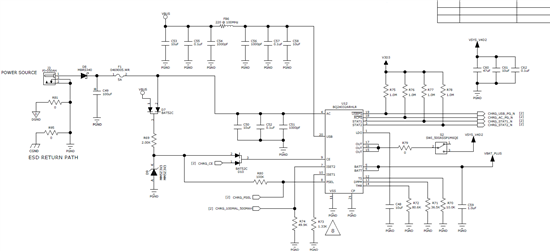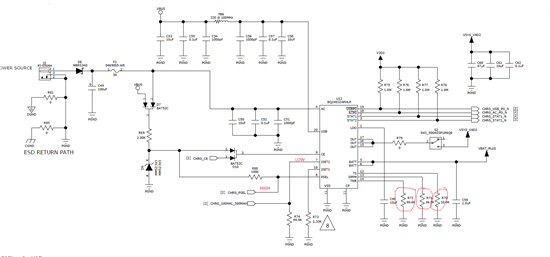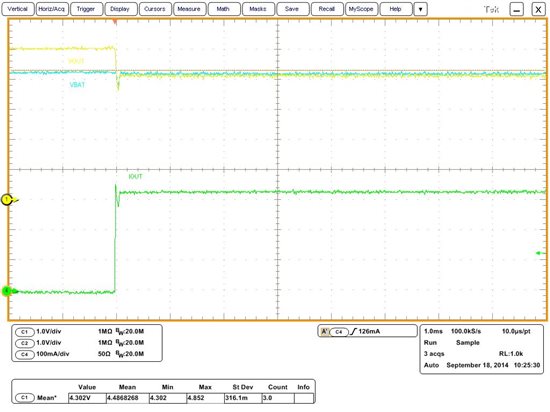Dear Support,
I am using the BQ24032A. Attached is my schematic and a scope shot captured at the OUT pins of the system output.
I have a battery connected to the charger, USB only input. The system load is a buck converter 3.3 LM3668SD-2833/NOPB, the 5V rail is unloaded, and another rail is unloaded.
If I enable the system load (via toggle switch), the output of the BQ24032A oscillates. My first impression is that the USB can source the current somehow. The strange thing is that the battery I connected has been fully charged, so I thought that if the system load requires more than what the USB can deliver, the battery would supply and compliment the system load requirements. I don't think this is what is happening here.
I would expect the Battery supply the load current first then when everything is ok, the USB sustains the current needed for the design.
On the 3.3V rail would be some LEDs, a PIC24 Microcontroller, and other small peripherals, budgeted to around 150mA max.
In my schematic if the processor can't come up, then it can't set 3 pins. However, I designed it such that
CE is high when VBUS or AC power is connected
PSEL is high when VBUS or AC power is connected
ISET2 will be low. This pin will only be set high when the process comes up. It can't come up since it oscillates
As I am writing this, I will try blue-wiring the ISET2 high to see if this allows the USB 500mA to come up.
Can you please look at my schematic and let me know if I am violating a parameter for this chip?
Best regards,
Robert






